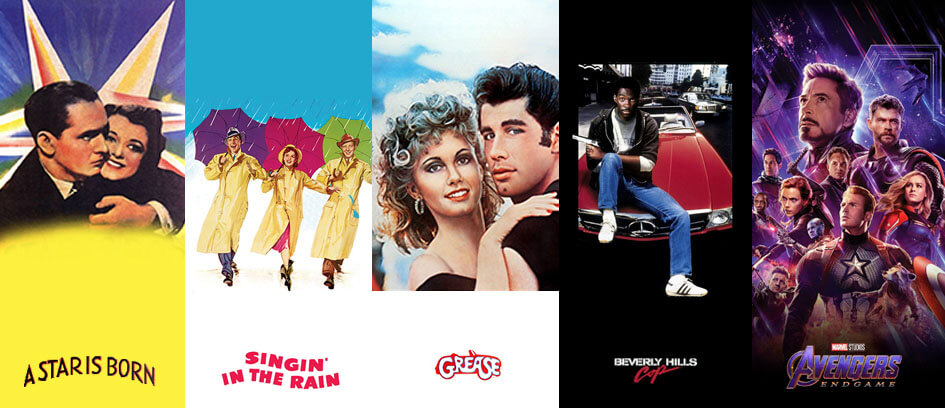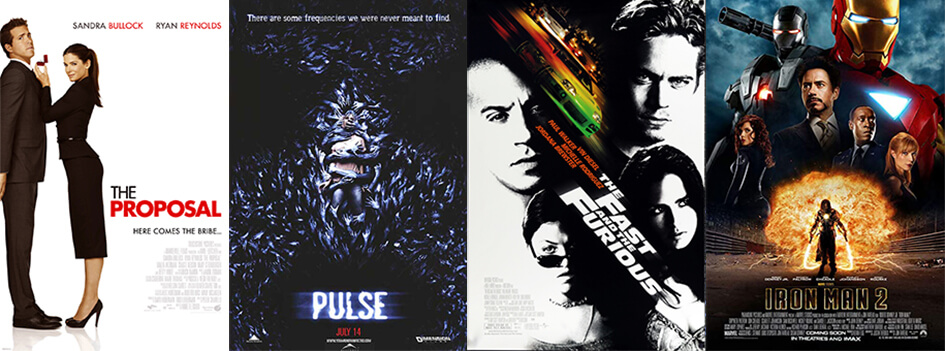The History of Movie Posters

Whether working on film and TV sets, scrolling your phone, or driving around town, you probably see movie posters all the time. While filmmakers put a lot of thought into the content of the movie or episode, just as much thought goes into creating the perfect poster to represent the production. And as a Central Casting Background Actor, you have the opportunity to get booked on movie and TV poster shoots.
Evolution of movie posters
The first promotional movie poster was created in 1895 for the French short L'Arroseur Arrosé, the earliest known fictional comedy film. Since the early cinemas only had one screen to show a single film, displaying posters outside the theater became integral to generating word of mouth and interest in the production.
Early Hollywood movie posters were heavily influenced by ads made for traveling entertainment, like circuses. The main style through the end of the 1940s featured an illustrated scene or characters from the film. Then the '50s and '60s posters saw an increase in conceptual, abstract, and minimalist designs. Photographs began to take over illustrations in the '70s, which led to today's modern film poster style that rose to prominence in the 1980s.
Psychology of movie posters
Color theory, the science and art behind use of color, is used throughout visual design, especially when trying to communicate a specific message. From cinematography, to production design, to special effects, color theory has long been used by filmmakers to draw the desired emotion from an audience. With little space or context to try to sell their film, poster designers often use specific color schemes and visuals to catch your eye and communicate what the film is about. According to movie poster designer James Verdesoto, these are some common color schemes and the types of movies and TV shows you might see advertised:
Red and white
Red evokes feelings of energy, excitement, and love. Red and white color schemes are used for comedy posters, with a photo or still that represents the movie.
Blue
Blue is often used in thrillers, showing a character running or in movement to indicate action and suspense. This poster type is inspired from film noir artwork and came to prominence in the 1990s.
Black, white, and orange
This color scheme is used for action films with a high contrast black and white photo to convey intensity with an orange fire like element to invoke excitement.
Blue and orange
This is one of the most common color combinations used for a variety of genres. As complimentary colors, blue and orange pop when used together. Blue can also be used to tie elements of the poster together, while orange guides your eye to the main focus.

Central Casting and movie posters
At Central Casting, we cast Background Actors, Stand-Ins, and doubles in movies, TV shows, and a variety of other productions, including in film and TV poster shoots. When making a poster, some productions opt to use doubles or Background Actors to get the perfect images for their design, like the horror film Pulse booking a hand double from Central Casting to create the "spirits" that envelop Kristen Bell on the poster. Accurate appearance information, sizes, and current photos are extremely important when booking doubles; keep your online profile updated so you show up in Casting Director searches for these types of roles.
Since we were founded in 1925, Central Casting has provided background for thousands of movies and TV episodes, from silent films of the 1920s, to Golden Age classics, to your current favorite productions. Be sure to check out the credits section on our About page to see some of the current projects we're working on throughout our offices in Los Angeles, New York, Georgia, and Louisiana. Then click the "legacy" option to learn more about some of the films and TV shows we've cast over the last 96 years.